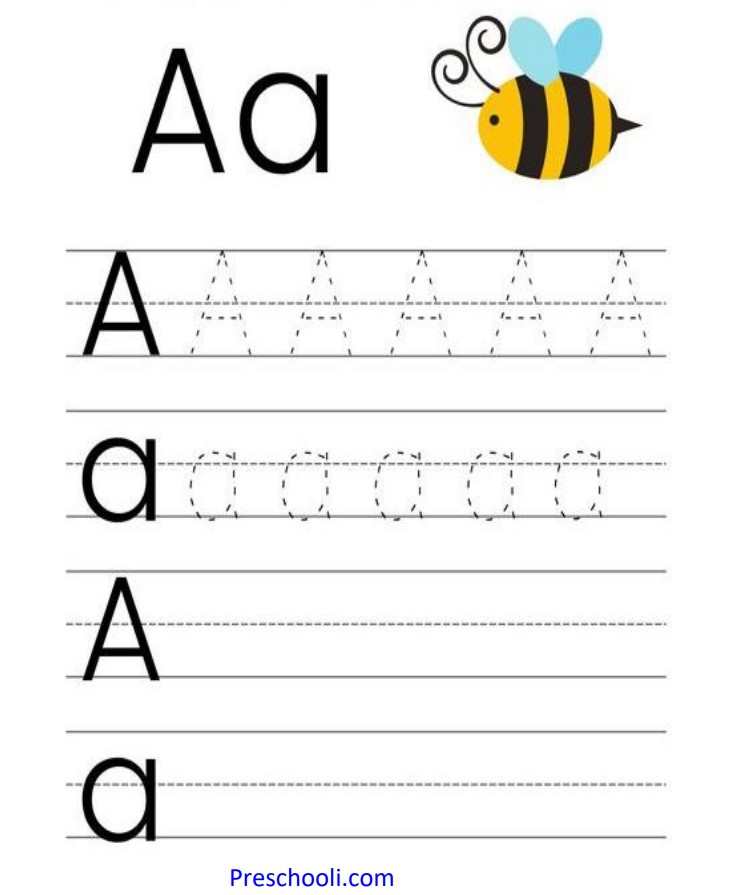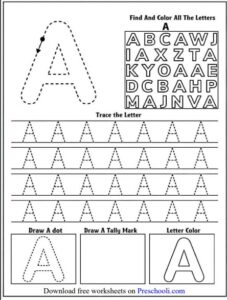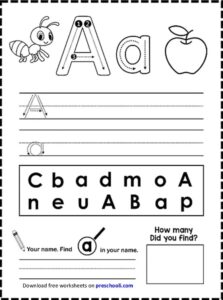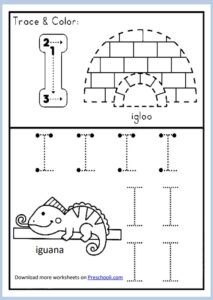The Building Blocks of Literacy: Mastering the Art of Tracing Letter A
For a preschooler, the trace of a finger along a printed page forms more than a simple line; it represents the inception of literacy skills. In this discussion, we explore the pivotal skill of tracing the letter A – a foundational step to reading and writing – highlighting why it’s so vital and offering creative exercises to reinforce learning. Whether you’re a parent committed to facilitating early literacy, a teacher tweaking your curriculum, or an enthusiast of early-childhood education, this piece will provide valuable insights.
Unlocking the ABCs: The Importance of Tracing A
Early childhood educators have long known the importance of early literacy. Before children can even form letters, they must recognize and understand the basic components of the alphabet. The letter ‘A’, as the beginning of the English alphabet, holds particular significance. Tracing letter A is not only about teaching a specific letter; it is about refining motor skills, building a relationship with shapes, and establishing the cognitive foundation for reading and writing. For educators and parents, this process is akin to constructing a strong, dependable bridge. It’s the precursor to the strong foundation every preschool education must build.
Structuring Success: Techniques for Tracing Letter A
Tracing letter A isn’t just about guiding a child’s hand over a printed page. To make the process engaging and effective, it requires a structured approach with a touch of creativity. Here are techniques to infuse fun and purpose:
Associative Learning
Incorporate the letter A with objects or animals that start with the same sound. Use pictures and physical items to help your child make the mental leap from the shape ‘A’ to the initial sound ‘ah’.
Multi-Sensory Experiences
Utilize diverse materials for tracing letter A. From sandpaper letters to finger painting, multi-sensory experiences cement the memory more effectively than passive tracing alone.
Creative Workshops
Build tracing activities into crafting sessions, like cutting out letter A shapes from colored paper, or molding the letter with clay. These hands-on tasks turn letter recognition into a 3D, tangible achievement.
Repetition with Variation
Repeat tracing exercises but vary the context. One day, it could be tracing on a large sheet of paper on the floor, the next on a vertical surface. This variation hones different motor skills.
Incorporate Technology
Use educational apps or programs designed for early literacy. These often gamify the learning process, turning repetitive tracing into an entertaining challenge.
Letter A Worksheets for Preschoolers
In the hustle of daily life, it’s often the simple, structured exercises that yield the most effective results. Free resources like printable worksheets designed for ‘tracing letter A’ serve as the backbone of at-home instruction, daycare centers, or early childhood education programs. These tools not only help to guide a child’s tracing skills but also provide a visual reinforcement of letter recognition.
Whether it’s connecting dots to complete the letter, coloring activities, or mazes that trace the shape, worksheets turn a solitary desktop exercise into a gratifying accomplishment. They’re an excellent resource for parents looking to supplement their child’s education in an organized and accessible way.
Educational Portals and Printables
The digital age has brought an abundant array of resources at our fingertips. Educational portals and printables often offer a wide variety of worksheets that cater to different learning styles and paces. Parents can select materials that best suit their child’s needs and interests.
Crafting Personalized Worksheets
For educators and especially for homeschooling parents, the ability to craft personalized worksheets is empowering. It allows for curriculum alignment and customization, tailoring each tracing activity to complement other learning objectives
Parental Involvement and Support
A child’s primary educator is their first teacher. The role of parents in reinforcing the lessons from the classroom cannot be overstated. Research indicates that parental involvement not only accelerates literacy development but also nurtures a love for learning. Tracing exercises are ideal for parental support, as they require minimal instructions and offer high engagement.
Creating Learning Environments at Home
A dedicated learning space at home can serve as a mini-educational haven for your child. Visual aids, storybook shelves, and a comfortable area for worksheets contribute to a structured environment that reinforces the importance of tracing and letter recognition.
The Reading-Writing Connection
Reading and writing are intertwined skills, each reinforcing the other. Through tracing letter A and subsequent words or sentences, a child can see their pre-writing skills evolve into meaningful, coherent forms of communication. This iterative process is fundamental, and parents play a vital role in showing this connection.
The Evolution of Tracing Letter A
Tracing letter A is just the beginning. It’s the first step in a dynamic educational odyssey that weaves fine motor skills, language development, and cognitive pathways into the larger tapestry of literacy. As a child graduates from tracing to independently forming letters, their progress serves as a testament to the power of foundational learning.
Transition to Writing
Once tracing has been mastered, the transition to writing becomes remarkably smoother. The muscle memory and cognitive recognition built during tracing directly translate into the physical act of writing.
Expanding to Other Letters
The success of learning to trace letter A lays the groundwork for tracing and recognizing other letters. Soon, children will be tracing the entire alphabet with confidence, setting the stage for future reading and writing accomplishments.
Final Thoughts on the Importance of Tracing Letter A
The ability to trace letter A is more than a precursor to formal schooling. It’s a vehicle through which we instill a love of language and literacy. When children engage with the form and function of this first letter, they’re taking their critical first steps toward unlocking the vast world of words. In supporting, structuring, and enriching the tracing process, we ensure that these foundational steps are not just taken, but firmly planted for a lifelong love of reading and writing.
In conclusion, the trace of the letter A is not a trivial pursuit; it is a profound beginning. It is the ‘once upon a time’ of your child’s educational narrative, the prologue to the story of their lifelong learning adventure. From associative learning to multi-sensory experiences, to personal touches with personalized worksheets, and the crucial parent’s role, each aspect of tracing the letter A serves to build an unshakable bond between a child and their budding literacy skills.
For all those involved in early childhood education and for the parents invested in their child’s future, the path is clear – trace the letter A with enthusiasm, creativity, and dedication, and witness the blossoming of young minds into lifelong learners. After all, the alphabet is the first of many adventures that learning holds.
Join our Facebook Group



